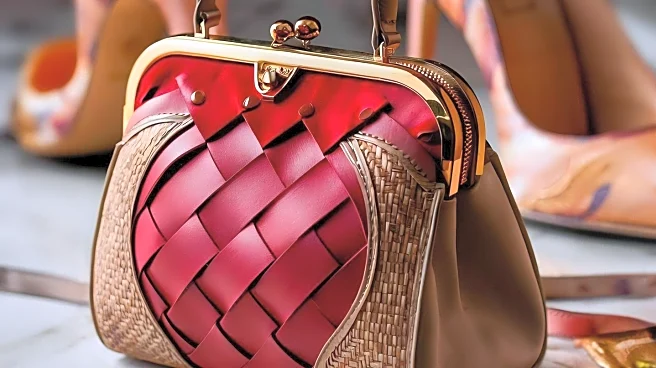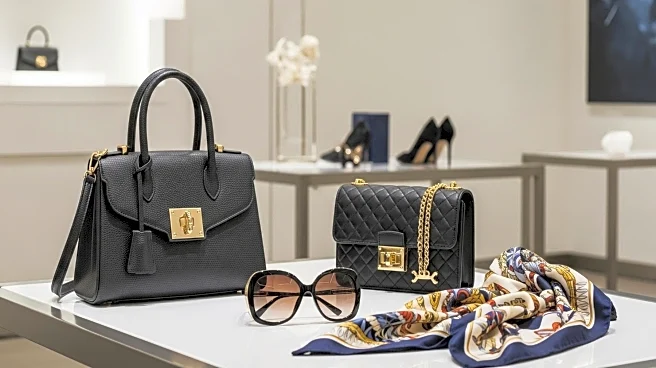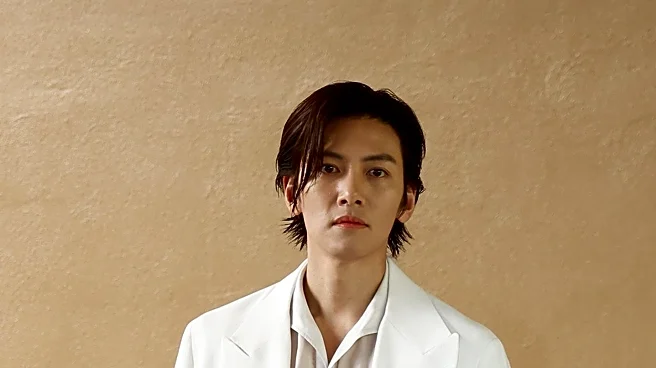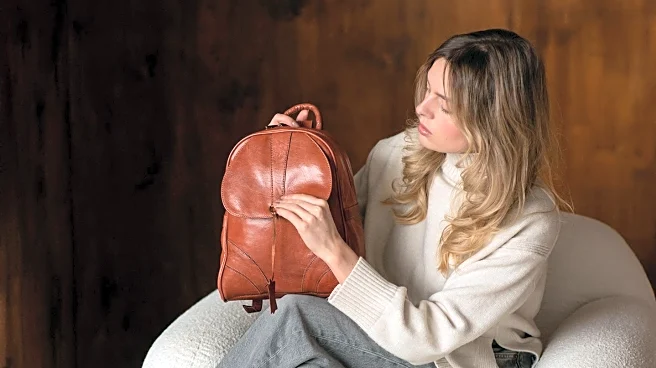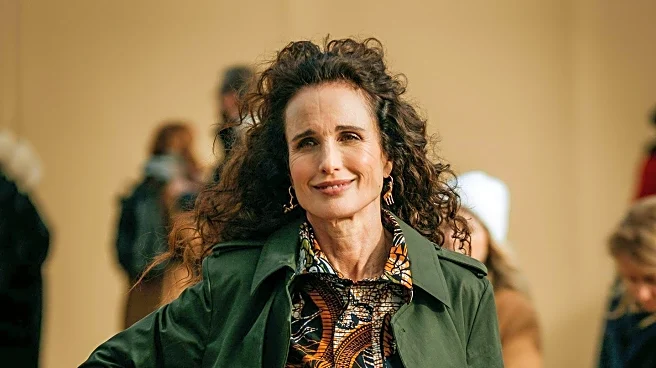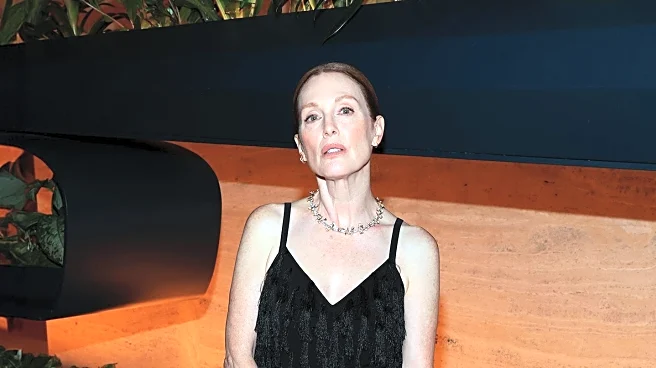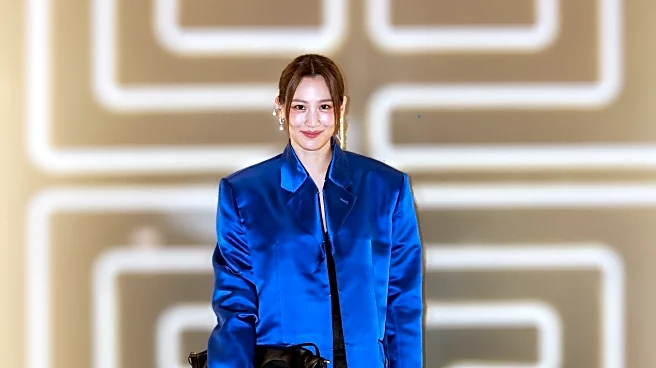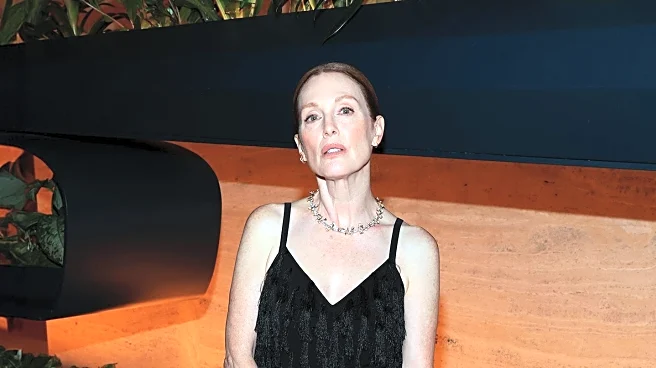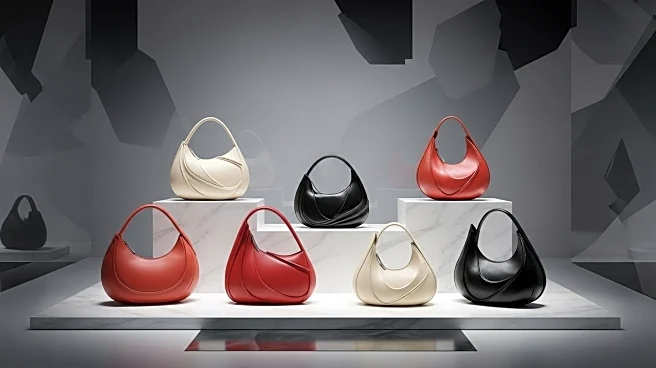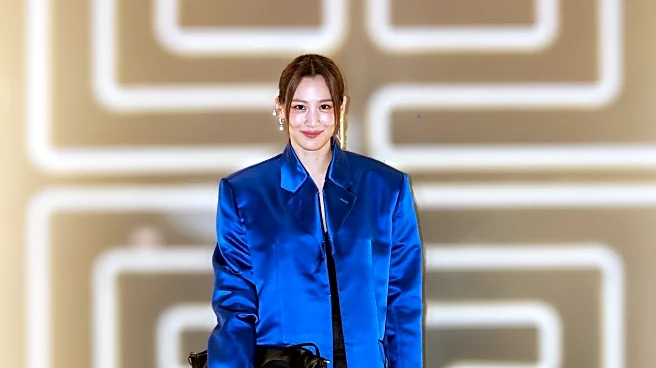What is the story about?
What's Happening?
Louise Trotter, the new creative director at Bottega Veneta, presented her debut collection at Milan Fashion Week. The collection emphasized the brand's signature craftsmanship, featuring the iconic intreccio weave and intricate knot details. Trotter's designs showcased voluminous silhouettes, inspired by the artisans in the Veneto atelier, while maintaining a focus on precision and wearability. Her debut was not a complete departure from the brand's previous creative direction but rather an evolution, balancing large volumes with practical, everyday wear. The collection also paid homage to Bottega Veneta's original branding from 1966 with a proposed change in logotype.
Why It's Important?
Trotter's debut is significant as it marks a new chapter for Bottega Veneta, a brand known for its luxury craftsmanship and understated elegance. Her approach to design, which combines opulence with practicality, could influence future trends in the fashion industry, particularly in how luxury brands balance high fashion with everyday wearability. This shift may appeal to a broader audience, potentially increasing the brand's market reach. Additionally, Trotter's position as the only female creative director debuting this season highlights the ongoing conversation about gender representation in the fashion industry.
What's Next?
As Trotter continues to develop her vision for Bottega Veneta, the fashion industry will be watching to see how her designs evolve and how they are received by consumers and critics alike. The proposed change in branding could signal further updates to the brand's identity, potentially influencing its marketing and retail strategies. Stakeholders, including investors and fashion enthusiasts, will be keen to see how Trotter's leadership impacts the brand's performance in the competitive luxury market.
Beyond the Headlines
Trotter's debut also raises questions about the balance between innovation and tradition in luxury fashion. Her ability to maintain the brand's heritage while introducing new elements could set a precedent for other luxury houses facing similar challenges. The collection's focus on craftsmanship and wearability may also reflect broader consumer trends towards sustainable and practical luxury fashion.
AI Generated Content
Do you find this article useful?
